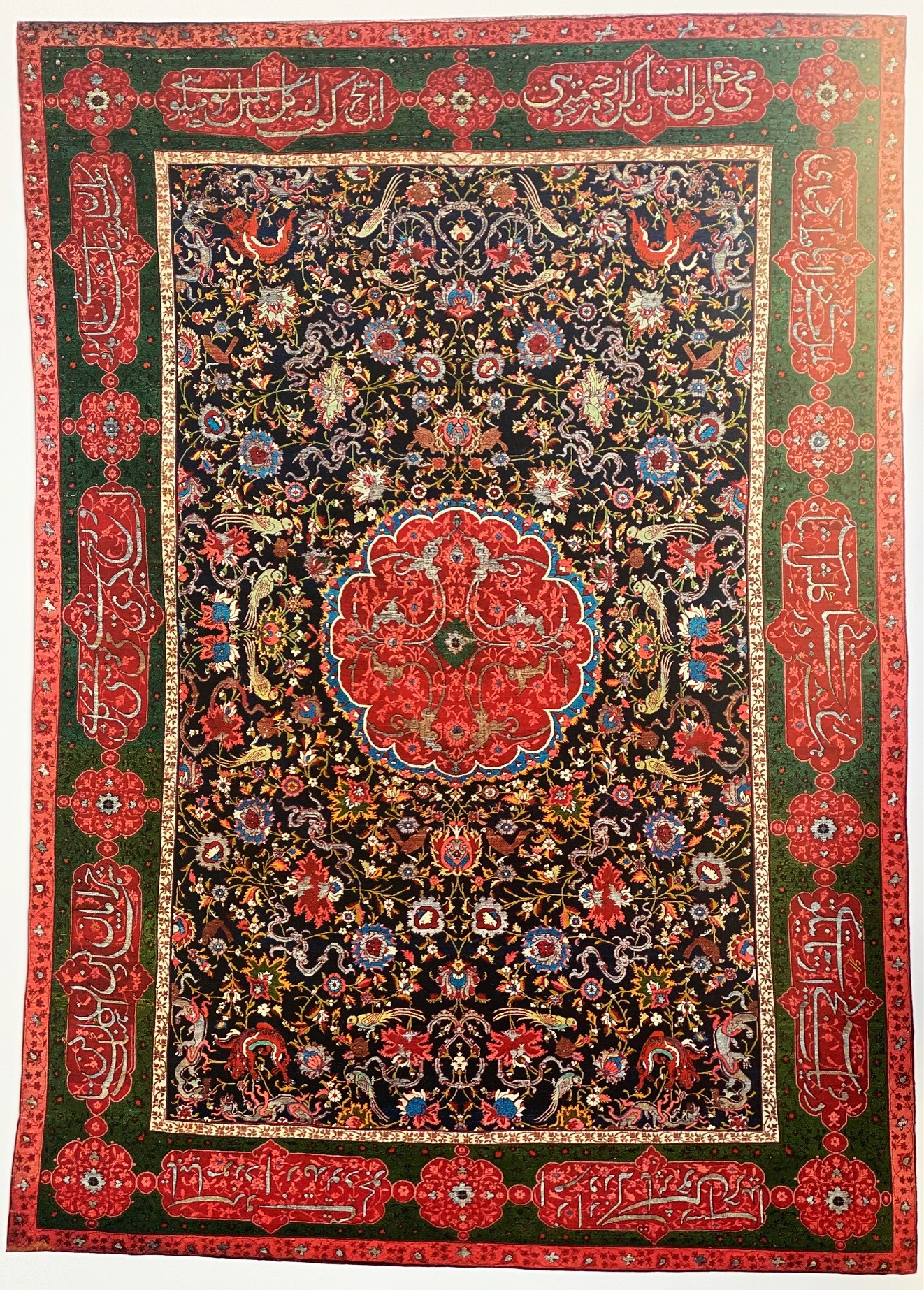
24 Oct Persian Carpets: Masterpieces!
Artistically, Persian carpets can be described as a mosaic made from wool and often silk as well.
Iran proudly holds the world’s most superior culture in carpet manufacturing. Carpet weaving is an essential part of Persian culture and Persian art.
Persian carpets have always fascinated me with their sheer options of styles and sizes, woven to such perfection and dyed with such precision that they tell the most magical stories by bringing to life a tale within each creation.
Tales filled with stunning symbols, characters, geometrical shapes, poetry, flora and fauna, making them rich with art and history. Let’s not forget how those carefully chosen vibrant colors are woven into life in such impeccable designs and accurate symmetry. Only then, to carpets become Persian carpets: masterpieces!
In 2010, the “traditional skills of carpet weaving” in Fars Province and Kashan were inscribed to the UNESCO Intangible Cultural Heritage Lists.
Bravo to the talented Persian artisans who spend countless hours creating such works of art!
***
As an example, please see below for a delightful excerpt from the book Epic Iran, 5000 Years of Culture which describes this beautiful Persian carpet (shown above):
Gorgeous Persian Carpet with verses by Hafez (1550-1600)
Silk warp and weft, knotted wool pile, areas brocaded with metal thread, 231 x 165 cm.
The Carpet’s border contains five couplets selected from a ghazal by Hafez (no. 486. The first reads:
Call for wine. Scatter blossoms. What more do you want from your time here?
At a dawn, the rose spoke these words,
‘Nightingale, what are you talking about?’
The poet’s enigmatic imagery takes us as far as a busy marketplace before returning to a flower-garden populated by birds.
When we turn to the pattern of the main field, we find not only fantastic blossoms and birds, but also dragons, Chinese qilins (mythical hooved creatures) and stylized clouds. The pattern does not illustrate the couplets nor does the poetry describe the pattern, rather they complement one another.
***
John Curtis, Ina Sarikhani Sandmann and Tim Stanley, 2021. Epic Iran, 5000 Years of Culture, V&A Publishing, (p. 219).
